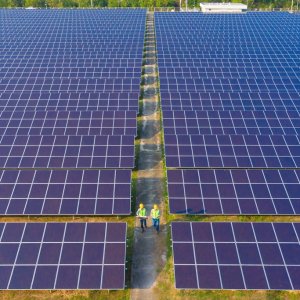
New Tech Boosts Solar-Based Distributed Generation
 By Cas Biekmann | Journalist and Industry Analyst -
Fri, 03/26/2021 - 09:08
By Cas Biekmann | Journalist and Industry Analyst -
Fri, 03/26/2021 - 09:08
Utility-scale development of photovoltaic solar projects is slowing down but solar DG solutions behind the meter provide an interesting growth track.
Mexico’s existing solar resource is enviable, with the county boasting one of the world’s leading irradiation profiles. The question is how to take advantage to address its energy needs. “Mexico has a privileged geographical position where about 85 percent of its territory has optimal radiation conditions to take full advantage of this energy,” says Hector Olea, former President of the Mexican Association of Solar Energy (ASOLMEX).
One way to make use of this solar potential is through distributed generation (DG). The threshold for interconnection and all the permitting involved implies a set capacity above 0.5MW. This means that any installation below this figure, such as solar panels on a rooftop, can safely remain “behind the meter.” The definition of DG, often tied to the 0.5MW threshold in Mexico, is therefore unique to the country.
Utility-scale projects are slowing down and this could indirectly push more consumers in the commercial and industrial (C&I) sphere to DG, said Pablo Rivero, Country Manager of ForeFront Power, in an MBN interview: “While it may not have increased demand per se, these factors impacted the flow of money that companies were contemplating to invest in renewable projects or other external updates to improve their efficiency and reliability. Instead, companies are now realigning these budgets toward their own energy production, which has opened up the opportunity for external investors to provide the entire solution, including investment, construction and O&M over the long term.”
The economics of solar DG make the option an almost obvious one for those able to invest in it. “For anyone owning a large rooftop in Mexico, a solar system below 0.5MW should be a no-brainer,” said Gilberto García-Ruiz, Business Development Director of Edison Energy to MBN.
PRODESEN highlights that in 2019, Mexico had 1,023MW of solar DG capacity installed. CRE reports this capacity increased over 40 percent during that year. Thirty-one percent of this capacity can be found in the country’s western region. Lower percentages are encountered in Baja California and Baja California Sur, with 3.6 and 1.8 percent respectively. It is precisely in these areas where industry experts stress the possibility for growth.
Technology Accelerates DG
Advancements in DG technology research and development are boosting this trend further. These innovations help to make solar more technically viable for companies, and decrease costs as well. One issue that might keep companies from installing DG is their lack of knowledge regarding the technology and benefits it provides. “As energy associations, we have not supported companies that promote these modern technologies and we have not ‘educated’ business chambers in leveraging them. I daresay that 90 percent of users do not know that, with the installation of a very simple and economical battery, their panels would continue to operate in case of increasingly common blackouts and help replace voltage stabilizers, regulators and UPSs,” said Hans Kohlsdorf, Managing Partner of Energy to Market.
Especially in DG, solar technology needs to work under different circumstances than in the utility-scale. Space, current and weight suddenly become very relevant factors, explained Iván Reyes, Latam Utility Director at LONGi Green Energy Technology, in an MBN interview. “For utility scale projects, we see a different size of module being applied, from 500W up to 700W. The main problem is that these modules increase in size and weight but not necessarily in efficiency. This is not a problem for utility scale but the DG market often uses rooftops, such as at industrial parks. Such a hefty module might not be suitable for a rooftop installation,” he said. “Furthermore, the biggest size (panel) provides a high amount of current. Inverters designed for DG projects are sometimes not suited for this. It can be a problem for C&I developers to procure inverters that are compatible with such sizes. Efficient, smaller modules that comply with all the technical market conditions are much easier to work with,” he added.
Solar panel technology remains crucial. Companies in the so-called Solar Module Super League are vying for the top spots in both the utility-scale and residential, commercial and industrial segments. And for good reason: factors such as output, warranty and overall quality are key in investments that will yield energy for the next 20 to 25 years. Nevertheless, there are other disruptors in the solar market that allow for an even better performance of solar panels both on and off the grid. These developments can be found in storage and inverters, at times integrated in one single solution.
These trends and developments are not new, of course. “The viability of battery storage has been a reality in our country since 2018, when Baja California Sur became the first state to host a solar power plant with energy storage: Aura Solar III,” said Olea. The fact that inverters now offer integrated battery storage for behind the meter solutions can be a big advantage for Mexico’s development. “The solar DG model brings solar energy closer to the segments of the population that can benefit the most from this technology, such as remote communities that lack electricity grid service or connection, or small and medium-sized enterprises that generate around 80 percent of Mexico’s jobs,” Olea argues.
















